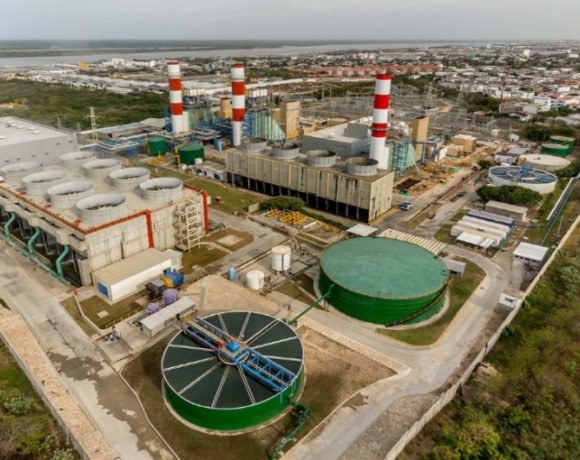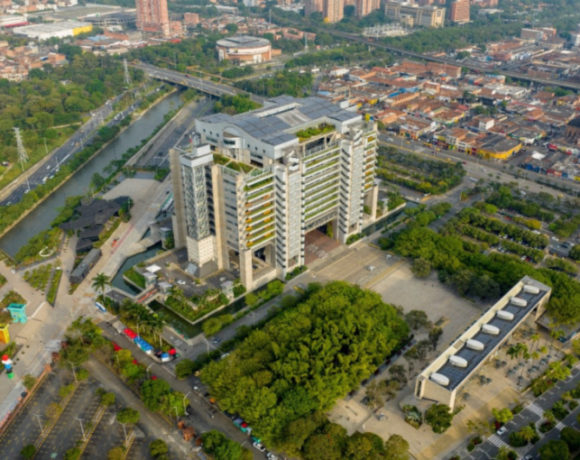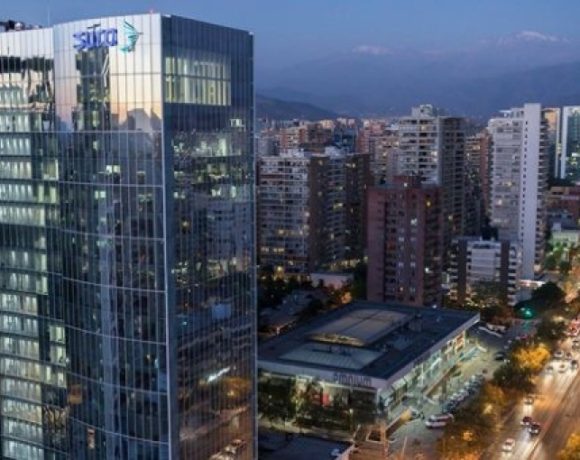Creytex ‘Intelligent Factory’ Shows How Medellin Can Compete in ‘Fast Fashion’

Starting humbly from a garage workshop in 1971, Medellin-based clothing manufacturer Creytex has since become an especially successful innovator in the fiercely competitive global textile/clothing business.
It’s an exceptional story, as most local textile and clothing manufacturers here experienced sharp declines last year in the Colombian domestic market — due mainly to a hike in value-added tax, combined with a national economic slow-down.
But amazingly, Creytex actually boosted its 2017 domestic sales by 20% year-on-year — and simultaneously boosted profit margins– thanks to exceptional market intelligence, high technology, enthusiastic leadership, motivated employees, and a novel “fast fashion” production system, as company managing director Lina Bustamante revealed to Medellin Herald in an exclusive February 9 interview here.
However, international sales volume dipped last year when one of Creytex’s major international buyers — with whom it had been supplying for nearly 12 years — strategically switched production to a proprietary factory in Asia.
That switch wasn’t entirely unexpected, as Bustamante explained. Reason: This big buyer had been gradually withdrawing from various contract manufacturers and shifting production to proprietary factories for “commodity” clothing items where lowest-cost — rather than fast-fashion — is the deciding factor.
Even though Colombian textile/clothing production costs are much lower than costs in the USA or Europe, Colombia is still relatively costly — if price alone is the over-riding factor – compared to certain Asian and Middle-Eastern producers, and even some Central American producers (such as Honduras), Bustamante explained.
So, to stay competitive in the domestic and global clothing business, Creytex has to specialize in “fast fashion” — and avoid “commodity” production, she added.
Intelligent Evolution
As a result of losing that international “commodity” clothing buyer last year, Creytex now exports about 60% — down from 70% previously — of its nearly 4 million clothing items produced here annually, mainly to the U.S. market. The other 40% mainly goes to the Colombian domestic market as well as to nearby South American and Central American markets.
Celebrating its 47th anniversary this year, family-owned Creytex – along with Medellin-based technology partner Inn Solutions (which shares office space at Creytex) – showed-off a miniature version of their “intelligent factory/fast-fashion” system to more than 22,000 attendees at the annual Colombiatex 2018 textile-industry congress here last month.
The novel technologies Creytex employs include the “3Dress” computer-based fashion design system from Italy-based MorganTecnica, which features three-dimensional, on-screen “avatars” that substitute for conventional mannequins or live models in design and development work.
This novel system enables flexible design creations, fitment validations and subsequent adjustments in just hours or minutes– hence cutting many days, weeks or even months from older, conventional development-and-approval cycles in clothing-fashion design.
What’s more, this “3Dress” system also can transmit the final design instructions electronically to computer-driven stamping, sublimation and cutting machines on the factory floor, followed by “lean” final assembly by highly skilled seamstresses — all overseen by an automated “Shopfloor” software-control system.
This novel system is now run by highly skilled Creytex employees — with technical help from Inn Solutions and its bilingual (English-Spanish) general manager, Juan Pablo Mejia.
Leading the charge here is the ever-smiling, infectiously enthusiastic Bustamante, who inspires a team of 400 direct workers at Creytex’s clean, quiet, friendly, high-tech factory totaling 7,000-square-meters, spread-out over four floors. (The company also has additional indirect workers producing certain items at satellite workshops near Medellin).
Creytex not only designs and produces clothing for both domestic and international markets – touting a special expertise in needle-point knitting — but also produces its own textiles, another key factor responding to the “fast fashion” trend sweeping global clothing markets.
In years past, many of Medellin’s small-to-medium-sized enterprises (including Creytex) had depended heavily (or even exclusively) upon giant textile manufacturers (such as Coltejer and Fabricato) to supply feedstock textiles.
But the ever-growing “fast fashion” trend means that manufacturers like Creytex can’t wait weeks or months for certain critical supplies from big textile makers – and retailers likewise no longer can sustain excess inventories or suffer heavy mark-downs to move excess product that’s growing “stale.”
So, as part of its novel fast-fashion production system, Creytex instead makes its own textiles, including numerous blends of cotton and synthetic fibers, for example. This system boosts efficiency, cuts losses, cuts production time, avoids costly subcontracting, increases control and enables greater volume production and higher margins, Bustamante explained.
While “low-cost” Asian producers might out-compete Medellin producers on cost in “commodity” clothing, Creytex has multiple advantages with its “fast fashion” system – including low-cost, fast-delivery air freight from Medellin to Miami, she said.
This system can quickly deliver “high-demand” fashion items — from design to production to delivery in Miami — in just days, rather than the months-long delays typical of Asian manufacturers shipping to the U.S. market.
Batch Production
What’s more, Creytex can design, produce and deliver such “high-demand” items in customized, limited, serial batches – responding quickly to demand changes — rather than producing and delivering huge (but slow-to-market) volumes that are typical of “commodity” producers.
In addition, Creytex now electronically gathers and analyzes customer demand at individual stores in Colombia, so that it can quickly respond to demand changes and adjust production for individual clothing items – avoiding inventory excesses and improving net profit margins.
“Fast fashion has to include the whole chain,” from design, to production, to shipping, to demand response, as well as employment of smart-technology and smart management, Bustamante explained.
“This is not a volume business. It’s about having the ideal product, in the ideal place, at the ideal time. And mass production can’t account for all markets. You also have to account for seasons, climates and the [socio-economic demographics] of each shop. This requires [investment in] more data analysis, but it also means better profitability.”
For the Colombian domestic market, Creytex has its own, proprietary leisure-wear and children’s-wear brands (“Belife” and “Baby Planet”), whereas its principal international buyers (mainly for leisure, performance and life-style wear) include Columbia, Concepts Sport, Gear for Sport, Little Me, Camp David, Pelo and Ripley, she said.
Beyond employment of high technology for “fast fashion,” Creytex also meets strict international standards for responsible social and environmental practices, as measured by buyers’ own periodic audits – such as the “Worldwide Responsible Accredited Production” (“WRAP”) protocol, she said.
Visitors to the Creytex facilities see more than just compliance with standards. They have been surprised by the clean, quiet, friendly, well-organized worker environment — something not always seen in certain Asian or Middle-Eastern clothing factories, where conditions can almost resemble Medieval despair.
About which Bustamante remarked: “I’ve had clients tell me, ‘your employees look happy!”
However, continuous motivation and retention of skilled workers isn’t easy – especially in an age when many younger people would rather seek employment in (for example) call-centers rather than clothing factories, Bustamante told us.
While Medellin has a more-than-100-years-long history of industry leadership in textiles, clothing and fashion – and can boast of now having several generations of highly skilled textile/clothing workers – being successful in clothing manufacture today also requires exceptionally intelligent, inspiring leadership.
That’s why Creytex employs a “coach” at each sewing station to encourage and teach workers, and also includes a bonus system for exceptionally productive employees.
Bottom line: Competing successfully in international and domestic clothing markets with fast response, precision quality, close attention to profitability, market intelligence and socially responsible operations is an evolving process.
Creytex first began exporting 15 years ago – at a time when many industry experts told Bustamante that achieving success from Medellin in such foreign markets was dubious.
But clients visiting Creytex today will be greeted by Bustamante’s winning smile, warm intelligence, the voice of experience, and see impressive operations. Likely as not, they’ll probably come away with proof that after more than 100 years of major textile/clothing/fashion experience, leading Medellin entrepreneurs still can compete successfully in one of the world’s toughest businesses.
















